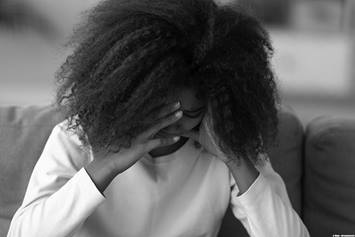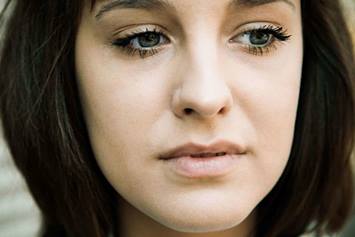Bipolar Disorder
Bipolar disorder is a mental illness that causes periods of "highs" and "lows." Symptoms often interfere with a child's school performance, friendships and family relationships.
What Is Bipolar Disorder?
Bipolar disorder, formerly known as manic-depression, is a waxing and waning mental illness that includes periods of "highs" and "lows" that can last hours, days, weeks, or months. These mood swings can even be "mixed," meaning that feelings of elation and depression occur in a rapid succession.
Bipolar disorder is best thought of on a spectrum, and includes bipolar type 1 (requires a full mania lasting 7 or more days or requiring hospitalization), bipolar 2 (requires hypomania lasting 4 or more days, milder than a full mania, and depression of 2 weeks or longer), cyclothymia (persistent “mini” highs and lows with very little periods of stable mood lasting a year or longer), and a “miscellaneous” category for persons with manic and depressive symptoms that interfere with functioning but don’t fit into one of the above patterns.
While bipolar spectrum disorders (BPSD) occur in nearly 4% of youth, the “classic” version of bipolar disorder (type 1) occurs in 0.6% of youth and is more likely to emerge in later adolescence rather than childhood.
Youth with BPSD are at a greater risk for anxiety disorders, attention-deficit hyperactivity disorder (ADHD), and substance use disorder. These "co-occurring" disorders can complicate diagnosis.
While BPSD is thought to have strong genetic/biological cause, environmental factors can greatly affect course of illness. Stressful or traumatic events may trigger episodes of mania or depression in a child with BPSD. While such events might cause mood changes in many children, those with BPSD may experience more extreme reactions.
What Are the Symptoms of Bipolar Disorder in Children and Teens?
Every child goes through ups and downs. Bipolar symptoms are more extreme. They affect sleep habits, energy level, and the ability to think clearly.
Bipolar symptoms often interfere with children's school performance, friendships, and family relationships. Some young people with bipolar disorder try to hurt themselves or attempt suicide.
These are some common symptoms of bipolar disorder in children and teens:
Manic Symptoms
- Severe changes in mood, from extremely irritable to overly silly and elated
- Increased energy
- Decreased need for sleep, such as going for days with very little sleep and not getting tired
- Talking too much or too fast, changing topics too quickly, not allowing interruptions
- Increased distraction and constantly moving from one thing to another
- Inflated self-esteem or a belief in unrealistic abilities or powers
- Increased sexual thoughts, feelings, activity, and use of sexual language (hypersexuality)
- Increased focus on reaching goals
- Becoming involved in too many activities
- Risky, wild, thrill-seeking behavior
Depression Symptoms
- Frequent sadness or crying
- Withdrawal from friends and activities
- Decreased energy level, lack of enthusiasm or motivation
- Lowered school grades, trouble making decisions
- Feelings of worthlessness or excessive guilt
- Extreme sensitivity to rejection or failure
- Major changes in habits such as over-sleeping or over-eating
- Frequent physical complaints such as headaches and stomachaches
- Recurring thoughts of death, suicide, or self-destructive behavior
Many teens with bipolar disorder begin to use alcohol and drugs as an escape. If an addiction develops, it is essential to treat both the mental health disorder and the substance abuse problem at the same time.
What Causes Bipolar Disorder?
The causes are not clearly understood. Bipolar disorder does run in families. A child is at greater risk of having bipolar disorder if a close family member has it.
Stressful or traumatic events may trigger episodes of mania or depression. Sometimes bipolar symptoms result from another medical condition, or as a side effect to medication. There is also evidence that brain structure and brain function may play roles in the onset of bipolar disorder.
How Is Bipolar Disorder Diagnosed?
Diagnosis of bipolar disorder can be difficult. There are no blood tests or brain scans that can diagnose bipolar disorder definitively.
Doctors make the diagnosis through a combination of examination procedures:
- Compiling a medical history of the patient
- Compiling a family history to identify instances of bipolar disorder, other mood disorders, or drug or alcohol problems in close relatives
- Completing a physical exam to rule out other conditions with similar symptoms
- Completing a mental health assessment to determine the severity of depression or mania and other co-occurring problems
How Is Bipolar Disorder Treated?
Bipolar disorder is best treated through a combination of interventions that include medication and family psychoeducation plus skill building for the youth and family. Additional interventions that might further benefit youth with bipolar disorder include electroconvulsive therapy (ECT), and complementary health approaches such as nutritional supplements, a healthy diet, exercise, meditation and/or prayer.
Treatment takes time. And it’s a “team” effort, involving doctors and therapists, parents and the child.
When Should You Seek Help for Bipolar Disorder?
If you notice manic or depressive symptoms in your child, talk with your family physician or pediatrician as a first step. If it seems appropriate, request a referral to a bipolar specialist to begin a thorough diagnostic evaluation.
Even if the symptoms don’t fully “qualify” as bipolar, trust your own parental judgment that something is going on inside your child.
Your child’s well-being – and the well-being of your family – are well worth the time invested in a thorough evaluation.



